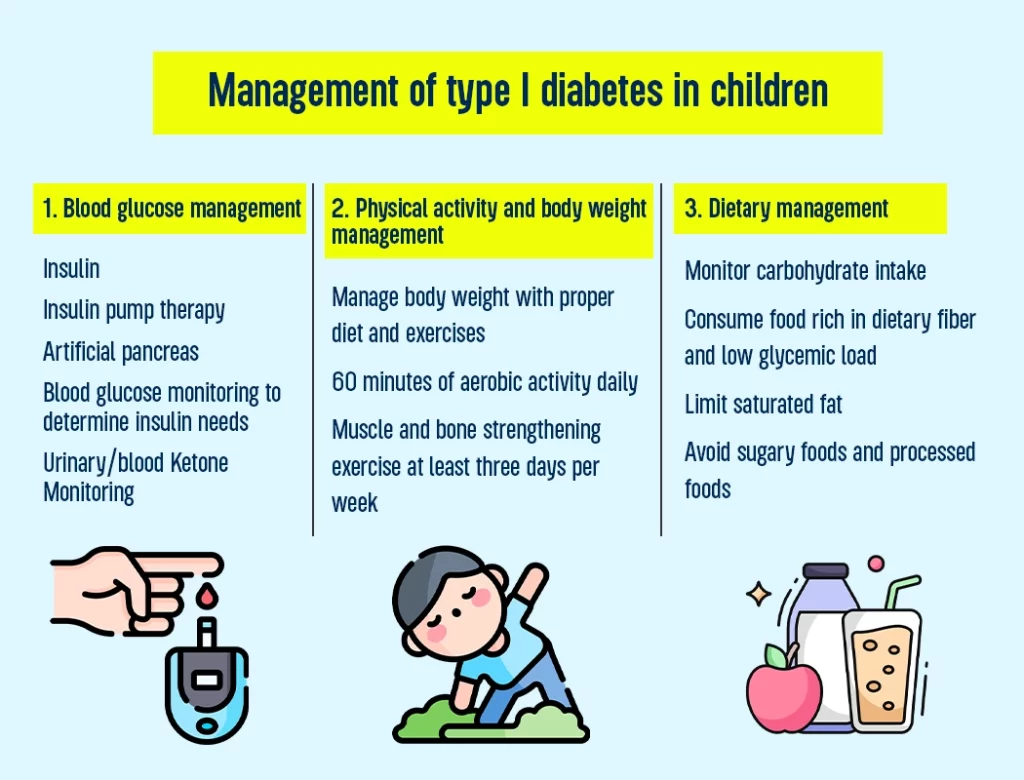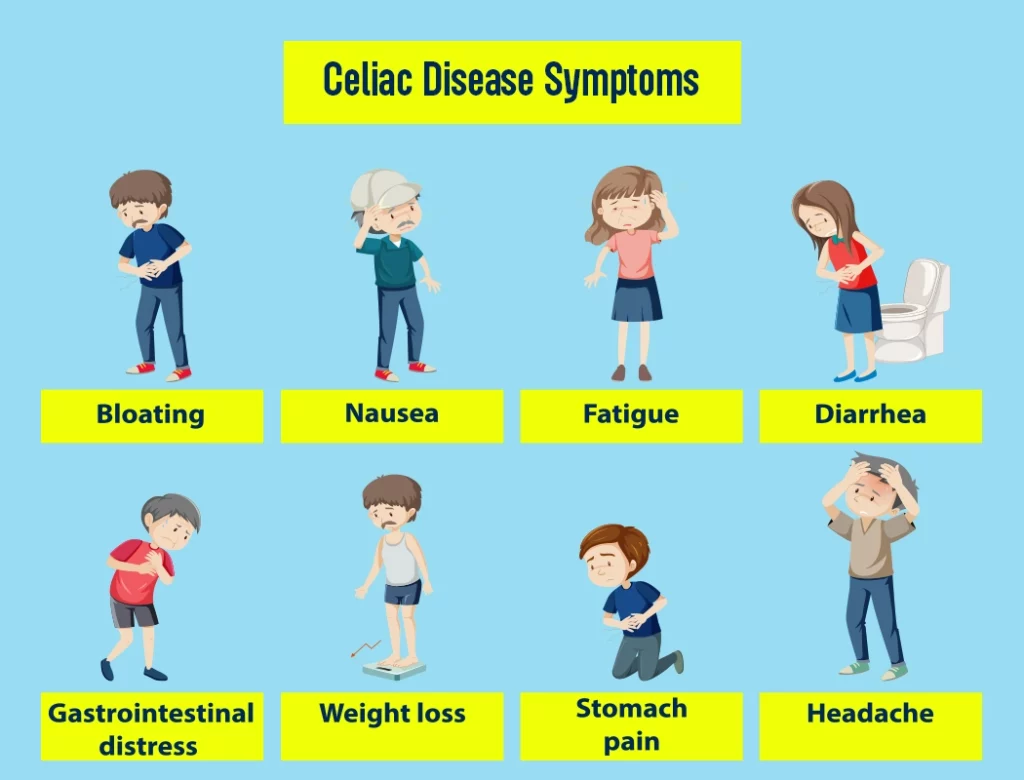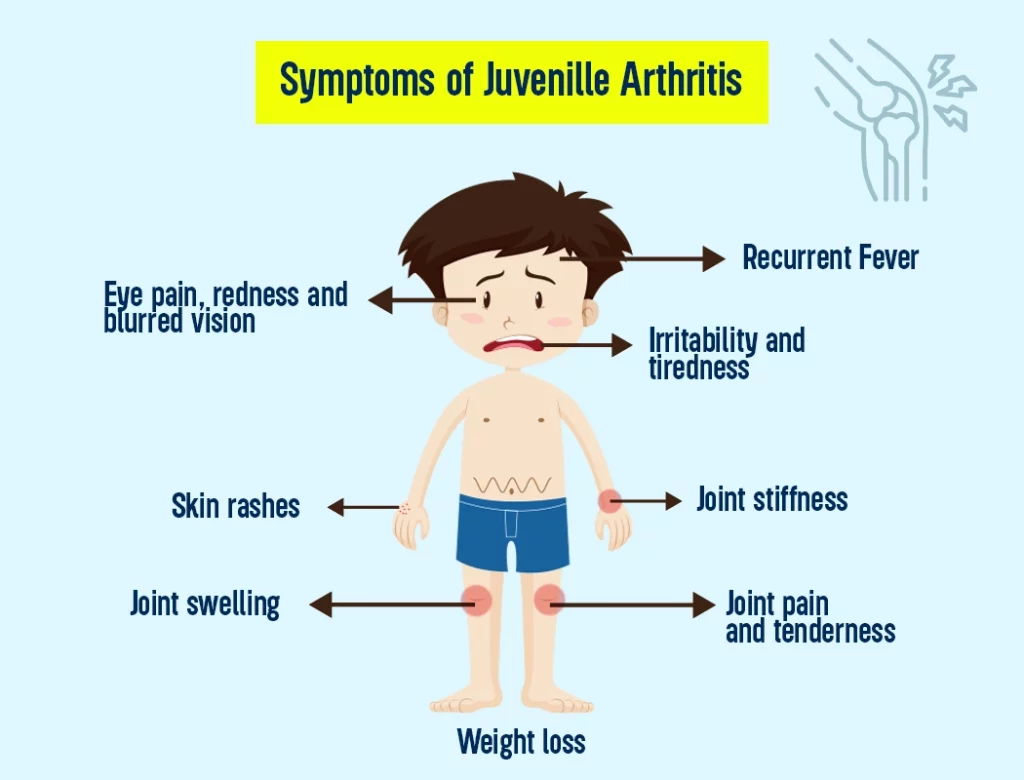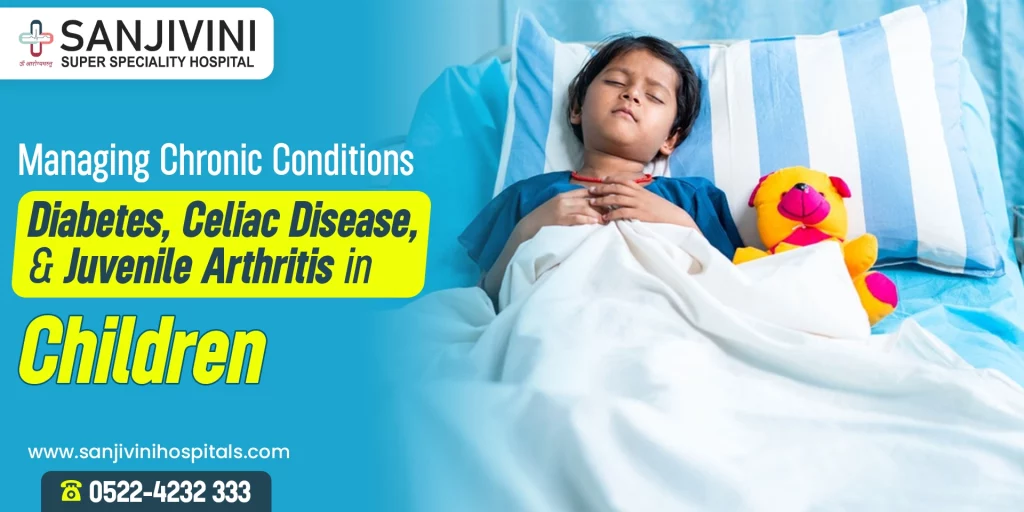Medically Reviewed by: Dr. Sonali Pandey– DCH, MBBS, DNB Paediatrics
Are you curious about helping your kids with some health challenges? Well, you’re in the right place! Today, we’re exploring how to manage Chronic Conditions in Children. These are things like diabetes, celiac disease, and juvenile arthritis, which can be a bit tough, but we’ll break it down simply for you.
Living in India, we face unique situations but don’t worry, we’ve got solutions tailored just for you. Together, let’s discover easy ways to support our children’s health and happiness, no matter what challenges come our way. Are you ready? Let’s get started!
Introduction to Chronic Conditions in Children
Chronic conditions in children demand ongoing and comprehensive healthcare management, involving daily attention and preparedness for emergencies. Effective management is essential for ensuring the long-term health and wellness of children with conditions such as allergies, asthma, diabetes, and seizures. Encouraging self-management through patient education, self-monitoring, and therapeutic interventions is key to preventive care for children and adolescents dealing with chronic illnesses. Initiatives like the Chronic Illness Management Program are dedicated to educating young individuals with conditions like diabetes, cystic fibrosis, and sickle cell disease, empowering them to adopt new skills and behaviors for better health outcomes.
Understanding Diabetes in Children
Overview of Diabetes in Children
Diabetes in children comprises Type 1 and Type 2 diabetes, with Type 1 being more prevalent in this age group. Type 1 diabetes arises when the immune system attacks the pancreatic cells responsible for insulin production, necessitating daily insulin injections for treatment. In contrast, Type 2 diabetes, typically associated with adults, is increasingly diagnosed in children, often due to factors like obesity and genetic predisposition.

Symptoms and Diagnosis
Signs of diabetes in children include increased thirst, frequent urination, unexplained weight loss, fatigue, and blurred vision. Diagnosis involves blood tests such as fasting plasma glucose and post-prandial glucose to confirm the condition.
Also Read: Tips for Understanding and Responding to Different Baby Cries
Daily Management Techniques
Blood Glucose Monitoring: Children with diabetes must regularly monitor their blood sugar levels using meters and test strips.
Insulin Therapy: Daily insulin injections are essential for children with Type 1 diabetes to maintain normal blood glucose levels.
Diet and Nutrition: Effective management of diabetes entails following a healthy, balanced diet with accurate carbohydrate counts to regulate blood sugar levels.
Physical Activity: Regular exercise plays a crucial role in helping children with diabetes manage their condition effectively.
Proper diabetes management in children is imperative for their long-term health and well-being, necessitating a comprehensive approach that includes monitoring, therapy, nutrition, and physical activity.
Coping with Celiac Disease in Children
Celiac Disease in Children: Understanding and Management
Celiac disease is a condition where the body’s immune system reacts abnormally to gluten, a protein found in wheat, rye, and barley. This reaction damages the small intestine’s lining, hindering nutrient absorption and causing various symptoms in children.
Symptoms in Children: Children with celiac disease may experience diarrhea, delayed puberty and growth, weight loss, and skin rashes. This condition often emerges after the introduction of gluten-containing foods, typically around 6-9 months of age.

Managing Celiac Disease:
- Gluten-Free Diet: Maintaining a strict gluten-free diet is vital for managing celiac disease in children. This means steering clear of wheat, rye, barley, and other gluten sources in their meals.
- Label Awareness: Teaching children with celiac disease to read food labels attentively is crucial. They need to be aware of potential sources of gluten hidden in various products.
- Regular Check-Ups: Regular check-ups and screenings play a pivotal role in monitoring the child’s growth, nutrient absorption, and overall well-being.
Proper management of celiac disease in children necessitates a combination of adhering to a gluten-free diet, staying vigilant about food labels, and ensuring regular medical check-ups to safeguard their growth and health.
Addressing Juvenile Arthritis in Children
Understanding Juvenile Arthritis and Its Varieties
Juvenile arthritis stands as the most prevalent form of arthritis among children and encompasses various types like juvenile idiopathic arthritis (JIA). Its symptoms commonly entail stiffness, pain, and sometimes vision issues. Managing JIA necessitates a blend of medications, therapies, and adjustments to lifestyle.
Symptoms and Diagnosis in Children
Symptoms of juvenile arthritis in children manifest as joint pain, swelling, stiffness, and limited range of motion. Diagnosis involves a comprehensive physical examination, blood tests, imaging studies, and occasionally joint fluid analysis to confirm the condition.

Also Read : Childhood Obesity Prevention: Expert Tips
Effective Management Strategies
- Medications and Therapies: Children with juvenile arthritis often need a mix of medications such as nonsteroidal anti-inflammatory drugs (NSAIDs), disease-modifying antirheumatic drugs (DMARDs), and biologics. Additionally, physical and occupational therapies play a significant role in symptom management.
- Physical Activity and Exercise: Regular physical activity and tailored exercises are pivotal for maintaining joint function, muscle strength, and overall well-being.
- Joint Protection Techniques: Teaching children techniques to protect their joints can lessen stress during daily activities, thereby reducing pain and preserving joint function.
- Emotional Support and Coping Mechanisms: Emotional support to children with juvenile arthritis is crucial. Coping strategies like relaxation techniques, mindfulness, and connecting with support groups aid in managing the emotional challenges associated with the condition.
Efficiently managing juvenile arthritis in children necessitates a comprehensive approach involving medications, therapies, physical activity, joint protection techniques, and emotional support to enhance their quality of life and overall well-being.
Supporting Children with Chronic Conditions
Importance of Communication and Education
Effective communication and education play a pivotal role in managing chronic conditions in children. Understanding the child’s condition and its care empowers parents and caregivers, enabling them to make informed decisions and feel more in control.
Encouraging Independence and Self-Management
As children mature, it’s essential to foster their independence and self-management skills regarding their condition. This process should be adapted to their age and development, gradually shifting responsibility from parents to the child.
Seeking Support from Healthcare Professionals and Support Groups
Both parents and children should actively seek assistance from healthcare professionals and support groups to comprehend the condition and its management better. Doing so can alleviate stress and enhance the overall quality of life for the child and the family.
Addressing Challenges and Overcoming Obstacles
Children with chronic conditions encounter various challenges, including hospitalizations, painful treatments, and the fear of potential complications. It’s crucial to assist them in coping with these stressors effectively. Additionally, parents should remain vigilant of their child’s evolving needs and plan accordingly.
Supporting Students with Chronic Health Conditions in School Settings
Staff members in educational and out-of-school time (OST) programs must possess the necessary skills and resources to support students with chronic health conditions. Effective communication and collaboration among students, caregivers, school authorities, and staff are vital for ensuring the well-being and inclusion of these students.
Take the first step towards better health for your child today. Seek consultation with Dr. S.M Pandey at Sanjivini Super Specialty Hospital Lucknow. Your child’s well-being is our top priority, and we are here to help you every step of the way.

